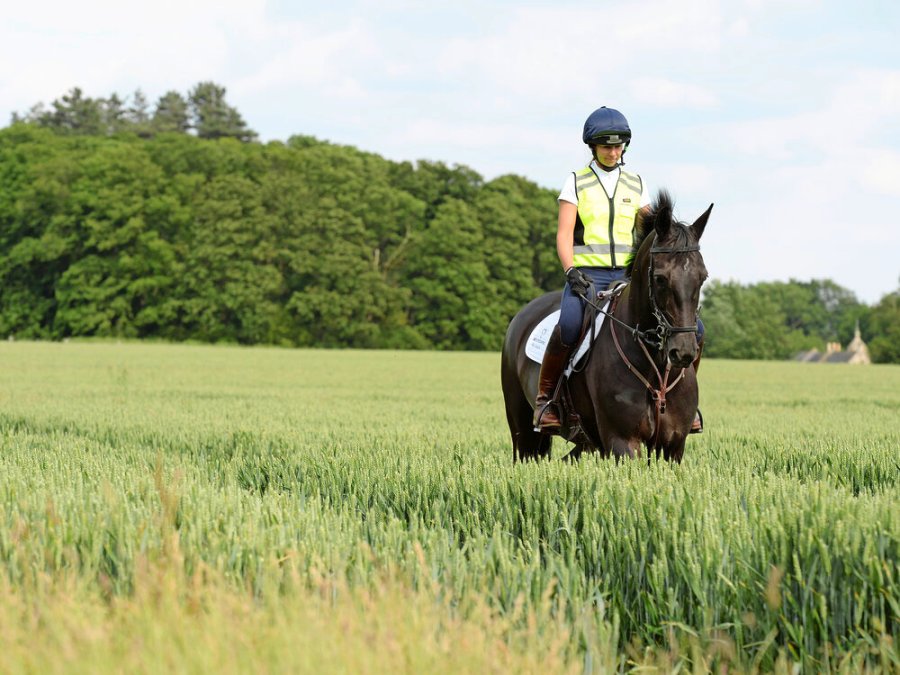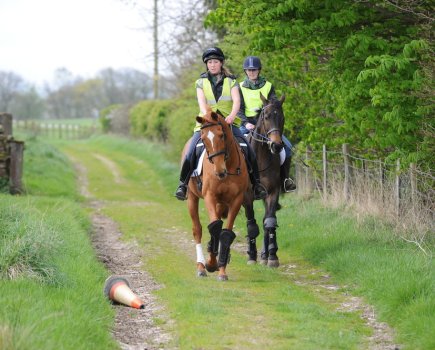Meeting wildlife and livestock is a common occurrence while out hacking. It’s important that you act appropriately depending on the species. Here, we explain how to act when encountering cattle, pigs, sheep and horses on rides.
Because all animals are unpredictable, always be on alert when riding along a bridlepath that crosses a field containing livestock. If you’re inexperienced when it comes to meeting livestock and knowing how to deal with them and your horse, try to ride with someone who is more knowledgeable and whose horse is accustomed to stock until you feel more confident and know what to expect and how to react. Your horse should soon learn from the good example of calm and experienced equine companions.
Cattle
Cattle are notoriously inquisitive creatures, but they are prey animals like horses and so aren’t usually aggressive unless they are females protecting their calves, or a bull protecting his cows.
Passing them calmly will ensure that they get used to horses and quieten down.
Longhorn and Highland cattle are often used for conservation grazing and may appear particularly menacing because of their size and long horns, but they are among the most docile breeds.
Cattle are good animals with which to start your horse’s livestock education.
Pigs
Some horses are very perturbed by pigs – at least until they become accustomed to them. If you’re based near an outdoor pig farm, contact the farmer to find out if there is any way of familiarising your horse with the pigs in a safe environment. The most important element with a horse is repetition. Their uncertainty around certain animals gives you all the more reason to expose them to them over and over again until it’s no longer a novelty.
Sheep
Never trot or canter through fields of sheep unless they are distant enough to be undisturbed. Keep checking and ideally stick to walk. Sheep are easily panicked, causing them to blindly run into situations where they may become injured.
Be careful at gates to ensure the sheep, especially lambs, don’t dash through. This is more likely if they feel cornered, or become separated from the flock.
Ewes with lambs are particularly vulnerable, especially on open land. Rams can be aggressive and should be treated with caution. They are most likely to be out with ewes from October to December.
Horses
Loose horses can present the biggest problem to equestrians. As with cattle, acting confidently but quietly and firmly will achieve the best results. You may need to turn towards them repeatedly as you cross the field.
If you have a mare it is wise to be particularly alert to her being in season and to avoid routes near any stallions at that time. If a stallion is turned out with mares, any strange horse may be at risk, whether it’s male or a female.









